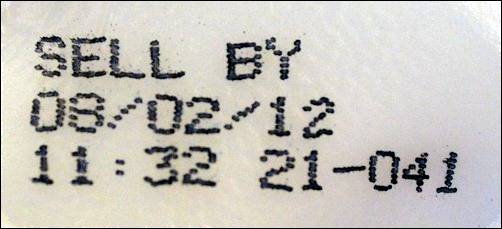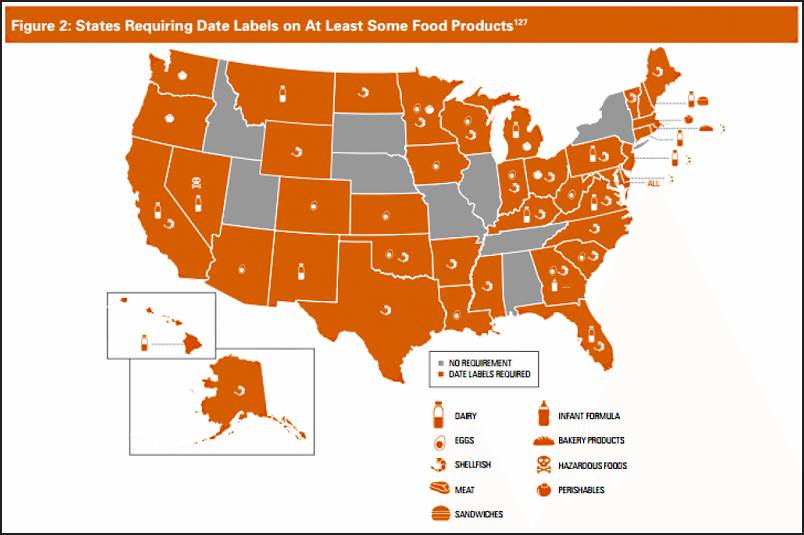
By Jean Blish Siers *
I have a confession: I eat expired food. Sometimes it’s barely expired, like the yogurt I put on top of my farm-fresh strawberries. It might be a day or two past its sell-by date, but I give it a sniff and if it smells fine, that’s all I care about. Milk, too. Since we no longer have a teenager in the house, even a half-gallon can last past its date. It’s pretty obvious when milk has gone bad and I’ve found the date usually is meaningless.
Other things I’m even less worried about. That jar of Trader Joe’s grainy brown mustard? It’s been in the refrigerator door for years. I give it a good shake and squirt it on a sandwich. Good as new.
I once had a boss obsessed with those confusing sell-by/use-by/best-by dates. Periodically we’d do a sweep of the office refrigerator, tossing bottles of salad dressing (Have you looked at the list of preservatives in most of those bottles? They will live longer than I will!,) barely-used ketchup and mustards, jams and sauces. The garbage can would be filled with mostly perfectly good food. Oh, sure, we tossed a lot of sad sandwiches in poorly sealed Styrofoam, where good intentions meet poor planning. But mostly we tossed edible food.

Click on the map to see a larger version.
Currently, the Food and Drug Administration regulates food labels, but not those dates stamped on everything from milk to capers to canned beans. And it appears that, for the most part, they are random. Manufacturers with a vested interest in having us toss the old and buy the new choose those dates, leading Americans to waste untold money and resources along the way. (Only baby food dates are standardized and regulated.)
A group from the Harvard Food Law and Policy Council is hoping to change that. They want to create a system with two standard labels, a quality-based label and a safety-based one. Here’s how it could work:
‘Under this law, manufacturers will have the option to use a quality-based label. However, if they choose to include a date indicating a food product’s quality they will be required to use the standard phrase “best if used by.” By contrast, for the very small group of foods for which the date may indicate safety, such as deli meats and prepared foods, manufacturers would be required to utilize a separate safety based phrase, “expires on.” In order to determine which foods should bear the safety-based label, the FDA should coordinate with the USDA to publish a list of foods that have a risk of being unsafe if not consumed after a certain date. Setting uniform, national standards for date labels will make it clear to consumers which foods need to be avoided past their dates and which can be safely eaten.
‘The federal law should also explicitly allow for the sale or donation of food after the “best if used by” quality date. State laws in 20 states restrict sale or donation of past-date food, even though the date is generally intended to indicate quality. Since quality is based on taste and is subjective, foods should be allowed to be sold or donated after that date.
‘To ensure Americans are best able to understand these new labels, FDA and USDA should undertake an educational campaign designed to inform consumers about the meaning of the “expires on” and “best if used by” labels. Ultimately, sensible date label reform will reduce consumer confusion, simplify regulatory compliance, and cut food waste across the supply chain and in consumers’ homes.’
 What a great, common sense start this would be on our path to reduce food waste! If you want to know more, visit notreallyexpired.com. Now, if you’ll excuse me, I think I’ll go make my sandwich … with expired mustard and some long-past-due pickles!
What a great, common sense start this would be on our path to reduce food waste! If you want to know more, visit notreallyexpired.com. Now, if you’ll excuse me, I think I’ll go make my sandwich … with expired mustard and some long-past-due pickles!
* Jean Blish Siers is SoSA’s Charlotte Area Gleaning Coordinator.
MAY
2016

